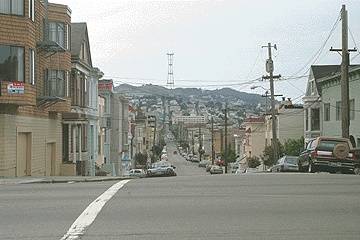A Visit to 1816 San Francisco: Difference between revisions
(categories) |
No edit summary |
||
| Line 19: | Line 19: | ||
[[Willows Resort 1860s |Prev. Document]] [[NATIVE AMERICANS in the MISSION |Next Document]] | [[Willows Resort 1860s |Prev. Document]] [[NATIVE AMERICANS in the MISSION |Next Document]] | ||
[[category:Mission]] [[category:1776-1823]] [[category:1990s]] [[category:Indigenous]] | [[category:Mission]] [[category:1776-1823]] [[category:1860s]] [[category:1990s]] [[category:Indigenous]] | ||
Revision as of 19:55, 23 July 2008
File:Mission$rural-mission-c-1834.jpg
Looking west on apx. 16th St. towards Mission Dolores, circa 1860 Image: Greg Gaar Collection
Adleberto von Chamisso (1781-1838), a German naturalist of French heritage, visited San Francisco in 1816 with the expedition of Otto Kotzebue, a German captain in the Russian Navy.
from Chamisso's Journal
The Mission Economy: The pious Franciscans who maintain the missions in new California are not trained in any of the arts and crafts that they are supposed to practice and teach here nor in any of the languages that the peoples to which they are sent speak... In each mission every two of them manage a considerable amount of farmland, conduct the religious services, and converse through interpreters, who themselves are Indians, with their charges. All property belongs to the congregation of the mission and is administered by the fathers. The Indian himself does not draw any direct profit from his labor and no wages if, for instance, he is rented out as a day laborer to the Presidio. The Mission, this rational being, draws the penny that he earns. He does not come to know property and is not bound by it. We do not deny the gentleness, the paternal care of the missionaries... But the relationship remains the one described and would, it seems to us, be different only in name if a slaveholder kept them for labor and rented them out at will; he too would feed them... The Indians are dying out in the missions at a rate that is increasing terribly. Their tribe is vanishing. San Francisco contains about a thousand Indians; the number of deaths in the preceding year surpassed 300, while this year it already amounts to 270 (to October), of which 40 occurred in the last month... There is no medical help to be found here, except that a ship's doctor is said to have once taught them bloodletting, and since then this expedient, being applied at every opportunity, hastens death. One disease especially, which, although opinions vary on the subject, the Europeans may well have spread abroad here, claimed its victims without opposition [syphilis].
Grizzly bears captured for entertainment: The famous spectacle of a combat between a bear and a bull had been promised to us. On the 21st, ten or twelve soldiers went over to the northern shore, in the shallop [an open boat fitted with oars] of the Mission, in order to capture bears with the lasso... In the evening of the 22nd, the hunters brought in a small bear. As for the bear which was to fight on the following day, he remained all night in the shallop, having his head and mouth free, contrary to custom, that he might be fresher for the combat... All night, great fires burned on the land at the back of the harbor, the natives are in the habit of burning the grass, to further its growth.
On the 23rd, the bear-baiting took place, on the beach. Unwilling and bound as the animals were, the spectacle had in it nothing great or praiseworthy. One pitied the poor beasts, who were so shamefully handled...
Looking west from 21st and Potrero Avenue, 1994 Photo: Chris Carlsson

